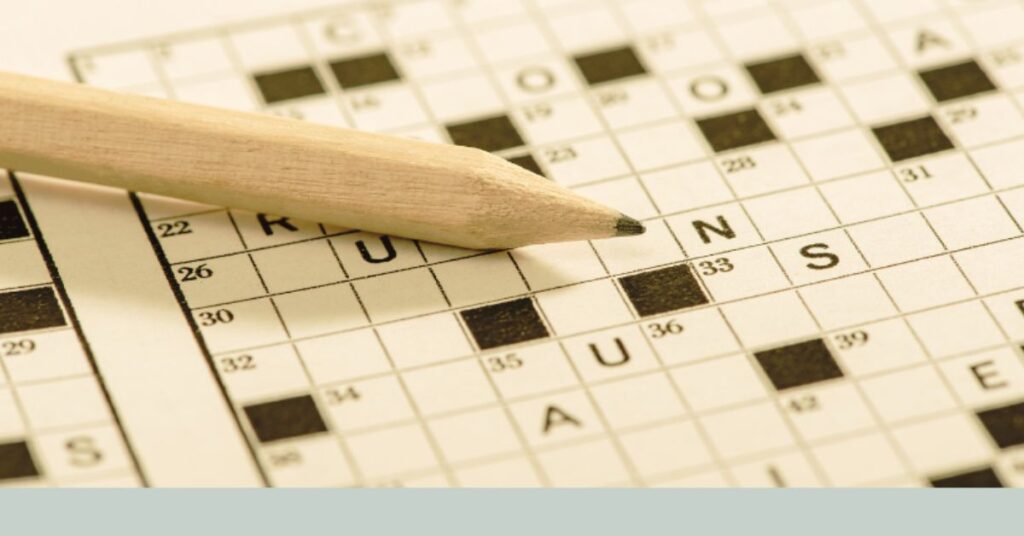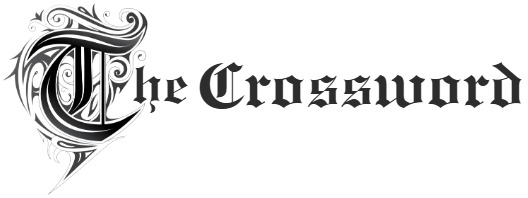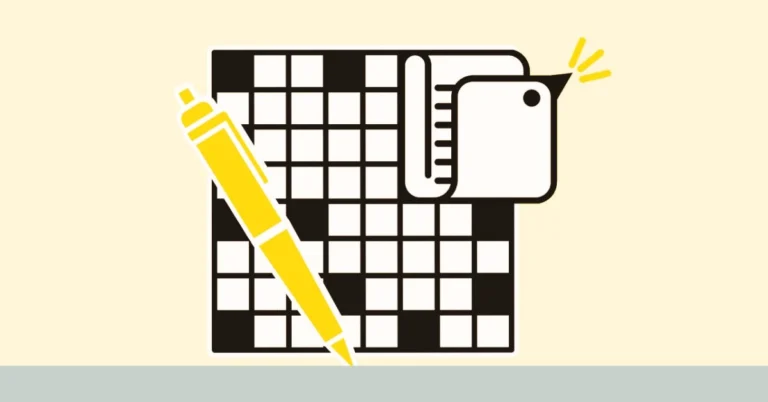Crosswords have long been a favorite pastime for puzzle enthusiasts, with their tantalizing clues that challenge both wit and word knowledge. One of the most popular forms of crossword puzzles is the NYT Mini Crossword, a compact and yet surprisingly complex daily puzzle featured in The New York Times. This version offers a quick, engaging challenge for those who love solving word games. But what makes the NYT Mini Crossword hints so addictive, and why do they continue to captivate solvers around the world?
The Allure of the NYT Mini Crossword Hints
For any seasoned crossword solver, the NYT Mini Crossword hints are a puzzle within a puzzle. Unlike their larger counterparts, which may require extensive vocabulary and knowledge, the mini-crossword’s smaller grid and concise clues demand sharp thinking and creative problem-solving. These hints are often short, sometimes cryptic, and always intriguing. The brevity of the hints makes them especially challenging, as every word and letter must be chosen with care.
The NYT Mini Crossword hints are designed to tease and test a solver’s ability to make connections between disparate ideas. For example, one might encounter a clue like “Red fruit” for a three-letter word (answer: “fig”), or a slightly more abstract hint like “Batter’s choice” (answer: “walk”). These simple yet multifaceted clues demonstrate how the NYT Mini Crossword hints tap into your knowledge of language, culture, and logic.
How the NYT Mini Crossword Works

The NYT Mini Crossword puzzle consists of a small 5×5 grid with clues for both across and down answers. Each day, solvers are provided with fresh NYT Mini Crossword hints that range from easy to moderately difficult, making it suitable for casual solvers and dedicated puzzle lovers alike. While the traditional crossword puzzle may seem overwhelming due to its sheer size and complexity, the Mini crossword takes a more relaxed approach, delivering a digestible portion of the overall experience.
One of the key elements that makes the NYT Mini Crossword hints so appealing is their versatility. Some hints require straightforward answers, while others demand a deep dive into popular culture, wordplay, or even scientific knowledge. In any case, each set of clues challenges the solver’s creativity, making it an excellent mental workout. This balance of difficulty is precisely why the NYT Mini Crossword hints continue to draw people in day after day.
The Psychological Appeal of Solving NYT Mini Crossword Hints
There is a deeply satisfying feeling that comes from solving a crossword puzzle. The act of filling in the grid, one letter at a time, evokes a sense of accomplishment, particularly when faced with tricky NYT Mini Crossword hints. It’s a process that offers immediate gratification and a sense of progression as one moves closer to completing the entire puzzle. The satisfaction comes not only from finishing but from cracking the clues along the way.
The psychology of solving the NYT Mini Crossword hints is linked to the reward system in the brain. Each correctly solved clue activates a small rush of dopamine, the neurotransmitter associated with pleasure and motivation. This neurochemical response reinforces the desire to continue solving the puzzle, even when some of the clues are more elusive. The sense of satisfaction builds as each answer is completed, motivating solvers to tackle the next one.
Moreover, the mini crossword is a low-stakes puzzle—solvers don’t need to devote hours to complete it. In fact, the entire puzzle can be completed in as little as 5 to 10 minutes, making it an easy and rewarding way to start or finish the day. As a result, the NYT Mini Crossword hints offer an accessible challenge that’s appealing to people of all skill levels and ages.
How to Approach the NYT Mini Crossword Hints Effectively
When tackling the NYT Mini Crossword hints, having a clear strategy can make all the difference between success and frustration. A good approach is to start with the simplest clues first. These are often the more straightforward ones, such as common abbreviations or general knowledge clues. Once those are filled in, they provide a foundation for solving the more difficult clues.
Another key strategy is to focus on the length of the answers. The grid size and the number of letters required for each clue can often help narrow down possible solutions. For example, a 3-letter word for a “Type of tree” might point to “oak,” “elm,” or “pine.” This initial clue may unlock others by providing critical intersecting letters.
The NYT Mini Crossword hints often rely on wordplay and lateral thinking. Some clues may be misleading at first, but with a little creativity, solvers can uncover hidden meanings. For example, a clue like “Form of energy” could be asking for “heat,” “sun,” or even “kinetic,” depending on the context.
The Importance of Timing and Habit in Solving NYT Mini Crossword Hints
The NYT Mini Crossword hints offer more than just an intellectual challenge; they also create a sense of daily ritual. Many solvers make it a habit to tackle the puzzle first thing in the morning, or perhaps during a break at work. This regular engagement with the puzzle helps build problem-solving skills and boosts mental clarity. Solvers quickly become attuned to the rhythm and structure of the hints, allowing them to solve puzzles faster and more efficiently over time.
This habit-forming aspect of the NYT Mini Crossword hints is another reason why the puzzle remains so popular. Once someone gets into the rhythm of solving these puzzles daily, it can become a ritual that helps sharpen the mind. Like any good habit, it delivers benefits over time, making it easier for solvers to decode even the trickiest clues.
The Role of Technology in Enhancing the NYT Mini Crossword Experience
In today’s digital age, technology plays a significant role in how solvers interact with the NYT Mini Crossword hints. The puzzle is available through The New York Times website and mobile app, making it accessible at any time, anywhere. For those who prefer a more interactive experience, there are also online forums and apps where solvers can discuss and share answers, tips, and strategies related to the NYT Mini Crossword hints.
Some apps even provide hints or help with solving the puzzle, although many serious solvers prefer the challenge of solving the puzzle on their own. These technological tools allow players to tailor the experience to their preferences, whether they want a more straightforward, no-frills approach or a more social and competitive experience.
The Connection Between NYT Mini Crossword Hints and Language Skills

The NYT Mini Crossword hints are an excellent way to enhance vocabulary and language skills. As solvers tackle a new puzzle every day, they encounter new words, idioms, and phrases that may be unfamiliar. This exposure to new language and linguistic structures not only boosts vocabulary but also helps improve the solver’s overall language proficiency.
By engaging with these clues, solvers are also learning about cultural references, historical facts, and diverse fields of knowledge. Whether it’s an obscure scientific term or a reference to a classic movie, the NYT Mini Crossword hints serve as a mini-education in various areas of life. Over time, this expanded knowledge base makes the process of solving crosswords even more rewarding and intellectually enriching.
Why People Keep Coming Back to the NYT Mini Crossword
It’s easy to see why the NYT Mini Crossword hints continue to be a source of fascination for solvers. They are concise yet challenging, rewarding yet approachable. Whether solving alone or discussing clues with friends, the experience offers a sense of accomplishment and mental stimulation. The puzzles can be completed in just a few minutes, making them perfect for quick mental workouts, but the satisfaction of cracking each hint can linger long after the puzzle is done.
The consistent difficulty and variety of clues mean that no two puzzles are exactly the same. Solvers are always presented with new challenges, which keeps the experience fresh and exciting. This unpredictability is one of the main reasons why the NYT Mini Crossword hints have maintained their popularity over the years.
Conclusion
The NYT Mini Crossword hints are more than just a daily challenge; they are an invitation to engage with language, culture, and logic in a fun and rewarding way. Whether you’re a casual solver or a dedicated crossword enthusiast, the mini-crossword offers a perfect blend of accessibility and challenge. The brief, yet stimulating clues keep solvers coming back for more, sharpening their minds and expanding their horizons with each puzzle solved. The next time you’re faced with the NYT Mini Crossword hints, remember to take your time, enjoy the process, and embrace the challenge—one clue at a time.
Read more: Mindless NYT Crossword: A Deeper Dive into Its Popularity



